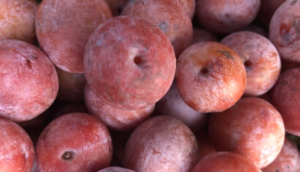Cinnamon is a spice derived from the inner bark of trees belonging to the genus Cinnamomum. In Mexican cuisine, it’s utilized in various sweet and savory dishes, contributing to their distinctive flavor profiles.
Differentiation from Other Spices in Mexican Cooking:
- Compared to spices like cumin or paprika, cinnamon stands out due to its unique sweet and warm flavor, which differs significantly from the savory or smoky profiles of other spices common in Mexican cuisine.
- While not as extensively used as some other spices, cinnamon plays a notable role in certain Mexican dishes, especially desserts and certain sauces.
Versatility of Cinnamon in Mexican Dishes:
- Cinnamon is considered versatile due to its ability to add warmth, depth, and a subtle sweetness to dishes. It can complement both sweet and savory flavors, enhancing the overall taste profile of various Mexican recipes.
Flavor Profile and Varieties of Cinnamon:
Taste and Aroma:
- Cinnamon has a warm, sweet, and slightly woody flavor profile, often accompanied by a subtle hint of spiciness.
- Its aroma is fragrant, sweet, and comforting, evoking a sense of warmth and richness.
Varieties:
- There are two primary varieties of cinnamon: Cassia (commonly known as “regular” or “Chinese” cinnamon) and Ceylon (referred to as “true” or “Ceylon” cinnamon).
- Cassia cinnamon is stronger and slightly bolder in flavor compared to the milder, more delicate Ceylon cinnamon.
Cinnamon’s Contribution to Mexican Dishes:
Flavor and Aroma Enhancement:
- In Mexican cuisine, cinnamon is often used in mole sauces, certain meat dishes, and various desserts, imparting a distinctive warmth and depth to these preparations.
- Its addition to Mexican chocolate-based sauces, like mole poblano, contributes to a unique balance of sweet and savory flavors.
Cinnamon’s inclusion in Mexican dishes introduces a pleasant warmth and subtle sweetness, particularly enhancing the flavor profiles of both sweet and savory culinary creations.
Forms and Preparation of Cinnamon:
Various Forms:
- Cinnamon is available in both stick (quill) and powder forms.
- Cinnamon Sticks: These can be used whole in simmering sauces or stews, providing a slower release of flavor.
- Cinnamon Powder: Ground cinnamon offers convenience and is easily incorporated into dishes, providing an immediate burst of flavor.
Preparation Techniques:
- Whole cinnamon sticks can be toasted or lightly crushed before using to release more flavor. They can also be ground into powder using a spice grinder or mortar and pestle when required.
Impact of Forms on Usage:
- Cinnamon Sticks: They are often used in longer-cooking dishes, allowing the flavors to infuse gradually. They’re ideal for slow-cooked stews or sauces.
- Cinnamon Powder: Powdered cinnamon is suitable for desserts, quick-cooking dishes, or recipes where immediate flavor dispersion is needed.
The choice between cinnamon sticks and powder depends on the recipe and the desired rate of flavor release.
Usage of Cinnamon in Mexican Recipes:
Dual Use in Sweet and Savory Dishes:
- In Mexican cuisine, cinnamon is utilized in both sweet and savory dishes, showcasing its versatility in various recipes.
- It’s often an essential ingredient in certain sauces, stews, and desserts, contributing to a distinctive flavor profile.
Key Dishes with Cinnamon:
- Mole Sauces: Cinnamon is a fundamental component in various mole sauces, such as mole poblano, adding depth and subtle sweetness to the complex flavor profile.
- Sweet Desserts: It’s a common element in Mexican desserts like arroz con leche (rice pudding), adding warmth and aromatic sweetness.
Recommended Pairings:
- Cinnamon pairs well with ingredients like chocolate, chilies, nuts, and fruits commonly used in Mexican cooking, enhancing their flavors by adding depth and warmth.
Tips for Cooking with Cinnamon:
- Incorporating Cinnamon:
- Cinnamon can be added to both sweet and savory dishes, but it’s essential to use it judiciously to prevent overpowering other flavors.
- For savory dishes like mole sauces, start with a small amount and adjust gradually to balance the flavors.
- Quantity and Types of Cinnamon:
- The quantity of cinnamon used varies based on the recipe and personal taste preferences. Generally, a small amount is sufficient to impart its distinct flavor.
- Both cinnamon sticks and ground cinnamon can be used, depending on the dish. Ground cinnamon disperses quickly, while sticks are ideal for longer cooking times.
- Highlighted Flavors and Dishes:
- Cinnamon’s flavor is particularly highlighted in dishes where it serves as a primary seasoning, such as mole sauces or certain desserts like arroz con leche (rice pudding).
- In desserts, cinnamon adds a warm and comforting aroma and taste, complementing sweet ingredients like chocolate or fruits.
Cinnamon is used in various Mexican recipes to add depth and warmth to both savory and sweet dishes. Adjusting the quantity and type of cinnamon based on the recipe and personal taste preferences is essential to ensure a balanced and harmonious flavor profile without overpowering other ingredients.
Nutritional Elements and Health Benefits of Cinnamon:
Nutritional Content: Cinnamon contains various compounds, including cinnamaldehyde and cinnamic acid, which possess antioxidant properties.
Health Benefits:
- Antioxidant Properties: Cinnamon contains antioxidants that help combat oxidative stress and inflammation in the body.
- Blood Sugar Regulation: Some studies suggest that cinnamon might aid in regulating blood sugar levels in individuals with diabetes or insulin resistance.
- Anti-inflammatory Effects: It may have anti-inflammatory properties that could benefit overall health.
Cinnamon’s Role in a Healthy Diet and Medicinal Uses:
Health Contributions: Cinnamon, when used in moderation, can be part of a balanced diet, potentially offering antioxidant and anti-inflammatory benefits.
Varieties, Substitutes, and Their Impact:
Substitutes for Cinnamon:
- Some spices like allspice or nutmeg might provide similar warm and sweet flavor profiles, although they won’t replicate cinnamon’s exact taste.
Impact of Substitutes on Taste:
- Substituting other spices for cinnamon in Mexican recipes might alter the taste profile of the dish, offering different flavor nuances. While they might impart warmth and sweetness, they won’t replicate cinnamon’s distinctive taste.
Close Substitutes in Mexican Cuisine:
- While there are no direct substitutes replicating cinnamon’s exact taste, using other warm and sweet spices might provide a somewhat similar profile in Mexican recipes.
While substitutes might offer similar warming and sweet notes, the distinct taste of cinnamon in Mexican dishes can’t be precisely replicated. However, other spices can contribute warmth and sweetness, albeit with different flavor nuances. Adjusting the quantity and combination of spices can help achieve a taste closer to dishes using cinnamon in Mexican cuisine.





